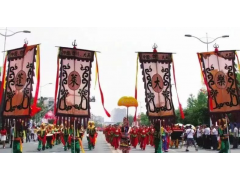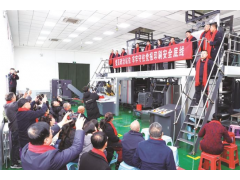Source: Beijing Youth Daily
Original title: You often use the song Typeface is so come

The opening and title page of the Diamond Sutra (Tang Dynasty) are the earliest engravings with clear dates in existence in China
Since the appearance of oracle bone scripts, Chinese characters have undergone the evolution of seal script, official script, cursive script, regular script and running script. With the development of science and technology and the popularity of computers, keyboard input is becoming more and more common, and there will be corresponding format requirements when using computers to write (such as title 3 Song typeface, bold center, text 4 small). As an important tool for the party and government organs to carry out leadership, perform functions and deal with public affairs, the format of official documents also has strict requirements. At present, the font commonly used in official documents writing is imitating Song GB2312. So, how did Song Typeface imitation come into being?
Regular script naturally became the original "printing font"
The appearance of Song style is closely related to the development of printing. Nowadays, the font of Chinese characters can be roughly divided into calligraphy font and printing font two systems, seal script, cursive script and running script belong to calligraphy font, and imitate Song typeface is specially designed for printing printing font.
In fact, printing is also developed from handwriting. Looking back in history, the earliest printing fonts should be italics. On the one hand, regular script in the modern sense developed and matured in the Tang Dynasty, and was widely used in the official documents and the folk. Block printing, on the other hand, was invented in the Tang Dynasty. Before the invention of printing, books were copied by hand, so the initial birth of block printing in the Tang Dynasty was to bring convenience to the copy writers at that time.
"Engraving" that is to carve wood, generally choose jujube wood or pear wood. After the wood is selected, the board is sawed into plates according to the size of the book, and then soaked in water for about a month, or boiled. After that, the plate is planed and dried, and then rubbed with soybean oil, scraped and polished. After that, you can paste the "writing sample" on the board, "writing sample" is to write the words to be engraved on the paper, if you find that there is a mistake, you dig out the mistake and paste the white paper. After the proof is correct, the writing sample can be affixed to the plate in reverse, and then it can be printed. Engraving is to cut out the part without words, and leave the part with words, so that the words are highlighted and easy to print. Before the printing step, the plate was still handwritten, but after the printing, the font left a knife mark, and the font printed after the engraving was roughly consistent with the handwritten font.
The Tang Dynasty was a period of great achievements in regular script art, and many famous calligraphers emerged, such as Ouyang Xun, Yan Zhenqing, Liu Gongquan, etc. They adapted to the development law of calligraphy art, improved and reformed regular script, and popularized the calligraphy art from the literati and officials to the public. Therefore, most of the fonts written by sample writers at that time were regular script that imitated the style of famous calligraphers. In this context, regular script naturally became the original "printing font". It can be said that regular script is the basis of all printing fonts.
What we now call Song style characters is developed on the basis of regular script. Hu Yinglin, a scholar in the Ming Dynasty, said in Shaoshi Shan House Brush Cluster (Part A) : "The carving originated in the Sui Dynasty, was practiced in the Tang Dynasty, expanded in the five dynasties, and excelled in the Song Dynasty." After the development of the Tang Dynasty and the five dynasties, block printing entered its heyday in the Song Dynasty.
The Song characters first appeared in the change from arc lines to straight lines
In the Northern Song Dynasty, the block script was still regular script, and there were people who specialized in writing standard regular script. They have a profound regular script skills, adhering to the "Tang people still Fa" legacy, competing to imitate the Tang Dynasty famous calligraphy.
The work of carving is more difficult and boring than writing, and the income of the carvers is very poor. In addition to the large demand for books at that time, in order to survive, the carving workers can only work regardless of the cold winter and heat, and constantly explore ways to improve work efficiency. They found that reducing the number of strokes while maintaining the basic shape of the text greatly sped up work. The most effective way to reduce the number of times of playing the sword is to simplify the original arc of the text into a straight line, and to make the complicated irregular places simple and easy to deal with. The Song style characters are beginning to emerge in this change. It can be said that the more regular style used in the Song version is the source of Song style.
Until the Ming Dynasty, the Emperor Taizu adopted the policy of suppressing martial arts and cultivating literature, and the printing and publishing industry developed greatly. Although the font and structure of the font of the Song edition were roughly maintained, the operating consciousness and habits of the engraver were inevitably infiltrated, and the style of the font of the Song edition gradually changed. The strokes of the inclined potential are gradually smooth, and the structure layout gradually becomes uniform. We can regard the early Ming Dynasty to imitate the Song version of the font as the foundation of the Song style.
Burners' long-term imitation of the Song version typeface deeply affected the norms of Ming Dynasty lettering, coupled with the need for rapid engraving, and finally produced a font with a square structure and symmetry after the Ming Wanli, which was convenient for knife engraving and printing, and was specially for reading, which is what we now call "Song style". Because it is developed from the font of the Song edition book, it was originally called the imitation Song typeface (not today's imitation Song typeface), and later called the old Song typeface and Song typeface.
The appearance of song typeface imitation is closely related to the introduction of lead type printing
Then how did the new style of writing official documents come about? As the name suggests, imitating Song is "imitating Song style". The source of modern Song typeface imitation can be traced back to Ding Shanzhi, Ding Fuzhi brothers launched in 1916 a copy of the Song Dynasty typeface - "Ding's Juzhen copied Song version of movable type", referred to as Juzhen copied Song (" Juzhen "is another name for movable type).
Although Bi Sheng invented movable type printing as early as the Northern Song Dynasty, the traditional movable type printing has many shortcomings, such as many kinds of characters, not easy to make, not suitable for long-term repeated use, and the need for typesetters to have certain cultural literacy. Therefore, until the Opium War, block printing was the mainstream printing technology in China. With the invasion of Western powers, Western lead type printing was also introduced into China, and China gradually moved from traditional printing to modern printing. The appearance of song typeface imitation is closely related to the introduction of lead type printing.
In 1912, Ding brothers father Ding Licheng passed away, the two in memory of their late father, they intend to father's "Xiaohuai 簃 Yin manuscript" printed. The Ding brothers believed that their father's legacy should be refined and distinctive, and could not be printed out shoddily. At that time, the popular printing font was Song typeface, but the lead mold of song typeface on the market mostly came from Japan, and its type outline was stiff, the font structure was loose, and it was not very elegant to print books and periodicals. Therefore, the Ding brothers decided to personally based on the Song Dynasty engraving book as a template, design imitation writing, engraving movable type.
At first, Ding's brothers carved characters with boxwood, but the labor cost was too large, and decided to use lead characters, and went to Shanghai to hire Xu Xixiang and Zhu Yibao, the famous engraves at that time, to carve lead characters. Finally in 1916, he created the "Ding's Juzhen version of Song movable type", which is also the first modern printing font in Chinese history. The font is elegant and beautiful, horizontal and vertical stroke thickness tends to be unified, the overall stroke is slightly thin, the starting point has a diagonal edge, the bending part has an angular shoulder, the point, skimming, holding, picking, hook peak is longer, the font is rigid and soft, straight and beautiful, pleasing to the eye.
After the creation of the model, the Ding brothers founded the Juzhen Copycat Song Printing Company in Shanghai, which was taken over by the Zhonghua Book Company in 1920 due to poor management, and in 1921, a formal contract was signed into the Zhonghua Book Company, and the ownership of the Juzhen copycat Song font was also transferred.
In 1920, Zhonghua Book Company established the printing Department of Juzhen Song after acquiring Juzhen Song Printing Company and Juzhen Song Font, and published a large number of books, periodicals and advertisements using Juzhen Song font. However, Zhonghua Book Company did not make further development on the basis of Juzhen imitation Song font, but only expanded the size, expanded the size of Juzhen imitation Song font from five font types to eight font types at the beginning of purchase, and increased the application of Juzhen imitation Song font.
It is also because of the success of Zhonghua Book Company Juzhen imitation Song font, which led to other book companies (such as the Commercial Press, World Book Company, Dadong Book Company, etc.) and font factories (such as Shanghai Huafeng Printing and Casting Institute, etc.) to create imitation Song font, so that the imitation Song font entered the golden age of development. "Song Typeface" in the first half of the 20th century has been gradually formed and mature.
In the early days of the founding of the People's Republic of China, China's printing font followed the copper mold type before liberation, and the font was old and messy. At the beginning, the four major printing fonts left along the song typeface, black style, regular style and imitation song typeface have no norms at all. In addition, from 1956 to 1959, the state published four batches of simplified fonts and parallel analogies totaling about 3,000 words, because of the promotion and application, Song, black, regular, imitation Song four fonts need to be replaced with simplified characters.
In 1961, the state established the typeface Research Office of the Shanghai Institute of Printing Technology, and began to develop new typefaces. In the year of its establishment, the Research Office successively developed the "Song One Body", "Song Two bodies" and "Black one body". The Song Dynasty was first used in the typesetting of the text font of the 1965 edition of Cihai. The black one is used to print "Cihai", reference books and map annotations. In addition, typeface designers have also made innovations in italics and song typefaces. The newly designed italic style is widely used in children's books, and the layout is fresh and eye-catching, even and neat. It is widely used in the documents of party and government organs.
Text and photo/West State (National Humanities and History)

